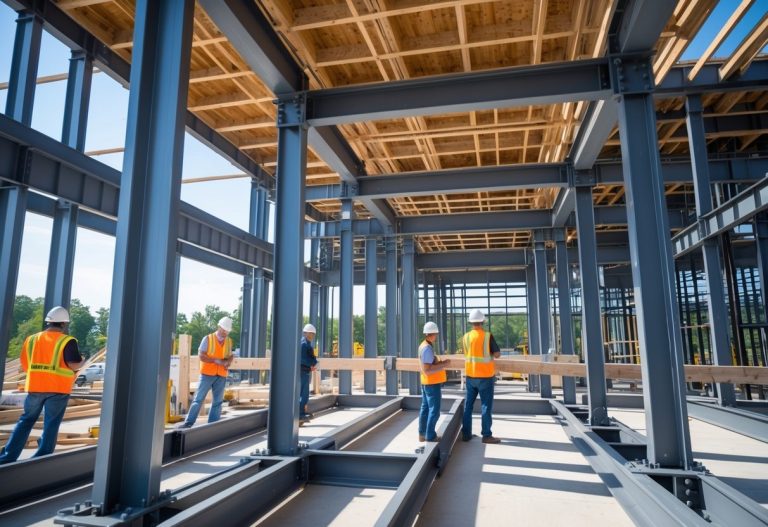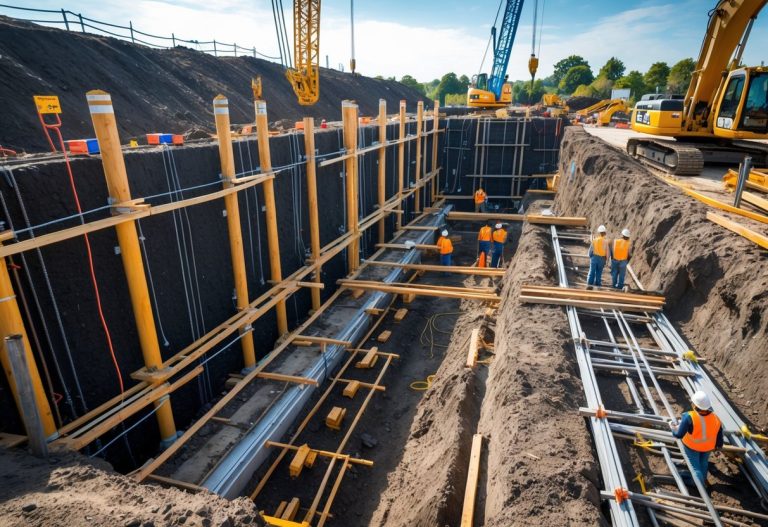When you’re planning to build, understanding a soil report is key to keeping your project safe and successful. A soil report tells you how strong the ground beneath your site is and shows what steps are needed to prepare it for construction. This helps avoid problems like unstable foundations or unexpected costs later on.
Your soil report will include details about the soil type, its strength, and any risks such as erosion or landslides nearby. Knowing this lets you or your builder decide if shallow foundations are enough or if you need deeper supports to keep your building steady.
By reading and using the soil report, you get a clearer picture of what your land can handle and how to build on it safely. This information is important whether you’re building a small home or a larger structure, so you can make smart choices from the start.
Key Elements of a Soil Report for Construction

A soil report breaks down important information about the ground where you plan to build. It tells you what kind of soil is there, how strong it is, and if water in the soil might affect your project. This helps you plan a safe and stable foundation.
Site Description and Soil Sampling
The site description shows where the soil samples were taken and explains how the tests were done. It includes details like the location, size, and shape of the area. This helps you understand the test results in the right context.
Soil sampling involves digging or drilling to collect soil from different depths. These samples are tested in a lab to check properties like texture, moisture, and density. The report tells you which methods were used to get the best pictures of the underground soil.
Soil Profile and Classification
The soil profile describes the layers of soil below the surface. Each layer can be different, such as clay, sand, or gravel. Knowing these layers helps predict how the soil will hold weight or move.
Soil classification groups the soil based on its physical and chemical properties. You’ll see terms like “sandy soil” or “clayey soil.” This classification helps you choose the right foundation type and design for your building.
Bearing Capacity and Load-Bearing Recommendations
Bearing capacity is how much weight the soil can safely hold. The report gives numbers showing the maximum pressure the soil can handle without problems like sinking or cracking.
You will see recommendations for load limits and foundation types, such as shallow footings or deep piles. This advice helps you avoid structural problems by matching the foundation to the soil’s strength.
Groundwater Conditions
Groundwater conditions tell you if water is close to the surface or moves through the soil. This affects how strong your foundation will be and if extra drainage or waterproofing is needed.
The report may show water levels at different times, like after rain or in dry seasons. Knowing this helps protect your building from water damage or soil shifting.
Why Understanding a Soil Report Matters in Construction
A soil report gives you important information about the ground where you plan to build. It helps you make smart decisions about design, spot problems before they happen, and save money by avoiding costly mistakes.
Impact on Structural Design
Your soil report tells you the type of soil and its strength. This information helps engineers decide what kind of foundation your building needs. For example, soft or loose soil might need deeper or stronger foundations to keep the structure safe.
The soil’s ability to hold weight, called bearing capacity, affects how heavy your building can be. If the soil is weak, your design may need to change to avoid sinking or cracking.
By using the soil report, you avoid guesswork and create a safer, more stable building.
Identifying Potential Construction Challenges
Soil reports reveal issues like water levels, soil movement, and the presence of clay or rock. High water tables can cause flooding and weaken foundations.
Certain soils, like expansive clays, swell when wet and shrink when dry. This movement can crack foundations and walls. Knowing this early helps you plan ways to manage soil changes.
The report also shows if your site will need extra work, such as soil replacement or drainage systems, making sure you’re prepared for challenges before construction starts.
Risk Mitigation and Cost Savings
Using a soil report reduces the risk of expensive problems later. Fixing issues after construction costs much more than planning ahead.
You can avoid unexpected repairs and delays by understanding the soil conditions early. This helps keep your project on time and within budget.
The report guides contractors to use the right materials and techniques, saving money on overbuilding or failing structures. In the long run, this reduces maintenance costs and protects your investment.





